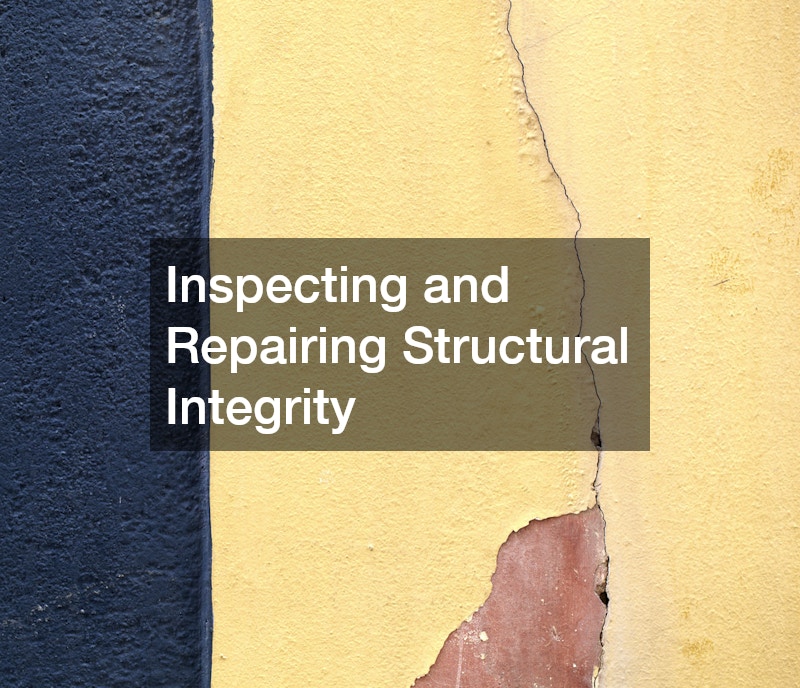As temperatures begin to drop, many homeowners start thinking about cozy nights by the fireplace and the beauty of freshly fallen snow. However, before winter sets in, it’s crucial to shift focus to home maintenance tasks that protect your property from the harsh elements. Cold weather can reveal hidden vulnerabilities in your home’s systems and structure—cracks in walls, faulty heating, leaky pipes, or insulation gaps—that can lead to costly repairs if ignored. Taking time in the fall to inspect and address these issues ensures that your home remains safe, warm, and efficient through the winter months.
A comprehensive winter maintenance checklist not only improves comfort but also preserves your home’s long-term value. From HVAC tune-ups to structural repairs, every system plays a role in keeping your home protected from cold, moisture, and energy loss. By identifying which areas need professional attention now, you can prevent emergencies later when repairs become more difficult or expensive. The following guide walks through essential home maintenance tasks that every homeowner should prioritize before winter—from plumbing and masonry to air quality and interior finishes—so your home is ready to handle the season’s challenges with ease.
1. Protecting Your Pipes and Water Systems
When temperatures drop below freezing, water in your pipes can expand and burst, causing significant damage. This is one of the main reasons why homeowners rely on trusted plumbers before the winter months. A professional inspection of your plumbing system ensures that all exposed pipes—especially those in basements, garages, or crawl spaces—are properly insulated. Dripping faucets, low water pressure, or unusual noises may signal a problem that should be addressed before temperatures fall further.
In addition to checking your pipes, plumbers can inspect your water heater to confirm it’s working efficiently. Sediment buildup in the tank can lower heating efficiency, forcing your system to work harder during colder weather. It’s also a good idea to drain outdoor faucets and shut off sprinkler systems to prevent frozen lines. Homeowners should take extra care to locate their main water shutoff valve in case of emergencies. Investing in preventive maintenance now will save you from costly repairs and the hassle of dealing with leaks or flooding when the ground is frozen and access is limited.
2. Keeping Your Fireplace Safe and Efficient

Few things are more inviting than a warm fire on a cold winter night. However, that comfort can turn dangerous if your chimney isn’t properly maintained. Scheduling professional chimney repairs before winter helps eliminate fire hazards and ensures your fireplace runs safely and efficiently. Over time, creosote—a flammable residue—can build up inside the chimney flue, increasing the risk of chimney fires. Regular inspections can detect blockages from leaves, nests, or debris that may restrict airflow or cause smoke to back up into your home.
A certified chimney specialist can also identify cracks or structural damage that may allow heat or carbon monoxide to escape into walls or the attic. If you have a wood-burning fireplace, consider installing a chimney cap to prevent moisture intrusion and animal nesting. Proper sealing and lining also improve heating efficiency, keeping more warmth inside your living space. Even homeowners with gas fireplaces should have their vents inspected annually to ensure proper ventilation. Routine chimney maintenance is an essential step toward maintaining home safety and reducing heating costs throughout the colder months.
3. Strengthening Brickwork and Outdoor Surfaces
Brick exteriors add timeless charm to a home, but the freeze-thaw cycle of winter can cause cracks and deterioration. That’s why scheduling brick masonry services in the fall is so important. Moisture can seep into small cracks in your brick or mortar joints, and when it freezes, it expands—widening gaps and leading to more severe structural issues. By addressing these small imperfections early, you can avoid extensive repair work later on.
A professional mason can repoint damaged mortar, clean efflorescence (the white salt deposits that form on bricks), and apply sealant to help repel water. If your home features walkways, patios, or retaining walls made of brick or stone, those surfaces also need inspection for loose or uneven areas that could become safety hazards when covered with ice or snow. Proper drainage around your foundation and exterior walls is equally critical to prevent moisture damage. Taking proactive steps with brick maintenance enhances both the beauty and durability of your home, protecting it from the stress of winter weather.
4. Inspecting and Repairing Structural Integrity

Cracks in walls, uneven floors, or sticking doors can indicate deeper structural issues that shouldn’t be ignored. Before winter sets in, homeowners should consider scheduling an inspection with experts who provide foundation repair services. Cold temperatures and shifting soil can worsen existing cracks, leading to water intrusion and structural instability. A professional foundation assessment can determine whether problems stem from settling, drainage issues, or frost heaving—a common winter concern.
Repairing these issues early prevents damage from spreading to walls, floors, and other areas of the home. In some cases, minor adjustments like sealing cracks or improving grading around the foundation can make a significant difference. For older homes, reinforcing the foundation with piers or underpinning might be necessary to ensure long-term stability. Preventive care now not only safeguards your property but also maintains its market value. By addressing foundation concerns before freezing weather arrives, you’re protecting one of the most important components of your home’s structure.
5. Refreshing Interior Surfaces and Tile Work
Bathrooms, kitchens, and tiled entryways endure constant wear and tear throughout the year. When grout begins to crack or discolor, it can allow moisture to seep behind tiles, causing damage that worsens in winter’s damp conditions. This is where professional grout repair makes a real difference. Re-grouting not only improves the appearance of your tiled surfaces but also reinforces their waterproofing. Fresh, sealed grout helps prevent mold growth, which tends to thrive in cool, humid environments.
During the fall, it’s a smart time to inspect your shower, bathtub, and kitchen backsplashes for signs of wear. Replacing old or missing grout lines can prevent leaks that might go unnoticed until damage has already occurred behind the surface. DIY grout repair kits work for minor fixes, but professionals can match color and texture for a seamless finish. Properly maintained grout keeps tiles looking pristine and protects your home from costly water damage—a small investment that pays off in both function and appearance.
6. Addressing Foundation Cracks and Settling
For homes built on concrete slabs, seasonal temperature changes can cause the foundation to shift, leading to visible cracks or uneven floors. If you notice these signs, scheduling slab foundation repair before winter is essential. Small cracks may seem harmless at first, but when moisture enters and freezes, it expands—making the damage worse. Foundation specialists can assess the severity of the issue and apply targeted solutions such as epoxy injections, mudjacking, or pier installation to stabilize the structure.
Addressing these problems early ensures that your home remains level, safe, and structurally sound. It also helps prevent secondary issues like stuck doors, separated trim, or cracked walls. Repairing your slab foundation before temperatures plummet makes it easier to apply materials and achieve lasting results. By being proactive now, you avoid costly and disruptive foundation work during the winter season when frozen ground makes access more difficult. Maintaining your foundation’s integrity is one of the most important steps you can take in preparing your home for winter.
7. Repairing Walls and Interior Finishes

Cold weather and humidity fluctuations can expose hidden flaws in your walls, such as small cracks, dents, or holes. Taking care of these imperfections before they worsen is key to keeping your home in top shape. Scheduling professional drywall repair not only enhances appearance but also prevents drafts and moisture from entering through damaged sections. Even hairline cracks can let cold air seep in, increasing heating costs and reducing comfort.
In preparation for winter, homeowners should inspect interior walls, especially near windows, doors, and corners where settling often occurs. Repairing these areas ensures a smooth, sealed surface ready for a fresh coat of paint if needed. If you notice discoloration or soft spots, it could indicate a water leak behind the wall—something that should be investigated before it causes more extensive damage. A quick repair now can prevent costly remediation later. Investing in drywall maintenance improves insulation, aesthetics, and overall comfort throughout the colder months.
8. Maintaining Heating and Cooling Systems
Your HVAC system works hardest during extreme temperatures, which makes pre-winter servicing a must. Many homeowners schedule local AC repairs in the fall to ensure that their heating and cooling systems run efficiently year-round. While you might associate air conditioning with summer, your HVAC system relies on shared components like ductwork and fans that affect both cooling and heating performance. A professional inspection can identify worn belts, clogged filters, or low refrigerant levels that reduce efficiency.
Regular maintenance also helps detect carbon monoxide leaks or electrical issues before they become hazardous. Technicians can clean coils, test thermostats, and verify that your furnace or heat pump is ready for winter operation. A well-maintained HVAC system keeps energy bills manageable and indoor air quality high. Remember, preventive maintenance is always less expensive than emergency repairs during a cold snap. Keeping your system in peak condition ensures your home remains warm and comfortable all winter long.
9. Improving Indoor Air Quality and Efficiency

With doors and windows closed tightly for winter, indoor air quality becomes even more important. Scheduling an air duct repair and sealing service ensures that your heating system operates efficiently while preventing dust, allergens, and pollutants from circulating throughout your home. Leaky or dirty ducts can cause uneven heating, higher energy bills, and poor air quality. Professional duct sealing eliminates leaks and improves airflow, helping your HVAC system deliver consistent comfort in every room.
Clean air ducts also reduce strain on your furnace or heat pump, extending equipment lifespan. Homeowners who suffer from allergies or respiratory issues will notice a significant improvement once ducts are properly sealed and cleaned. It’s also an opportunity to replace filters and install programmable thermostats to optimize temperature control. With energy costs on the rise, every improvement in efficiency makes a difference. Investing in duct maintenance now creates a cleaner, healthier, and more energy-efficient environment throughout the winter season.
10. Updating and Winterizing High-Use Spaces
While many home repairs focus on prevention, some upgrades offer both comfort and long-term value. Fall is an excellent time to schedule bathroom remodels, which not only modernize your space but also improve energy and water efficiency. Updating fixtures, replacing old caulking, and adding better ventilation can help prevent mold and mildew during humid winter months. Heated flooring systems are another popular addition that provides comfort during cold mornings.
Remodeling before winter also gives contractors better scheduling flexibility compared to the busy spring and summer seasons. Homeowners can use the opportunity to install low-flow shower-heads or insulated windows to reduce energy use. Even small improvements, like better lighting or new tile, can make a big difference in your home’s overall comfort and style. By tackling bathroom projects now, you ensure that one of your most-used spaces remains functional, efficient, and enjoyable through the cold months ahead.
Preparing your home for winter is about more than convenience—it’s an investment in your safety, comfort, and property value. From plumbing and HVAC maintenance to masonry and foundation repairs, every system in your home plays a role in shielding you from the season’s harsh conditions. Addressing small problems before they escalate saves money, reduces stress, and ensures that your home performs efficiently all year long.
A well-executed home maintenance plan also gives you peace of mind. You’ll avoid the disruption of emergency repairs during freezing temperatures and enjoy a warm, efficient living space for your family. Whether it’s sealing air ducts, inspecting chimneys, or updating bathrooms, every task contributes to a safer, more comfortable home environment. By following this ultimate winter checklist and scheduling professional inspections early, homeowners can confidently face the colder months knowing their property is ready for whatever the season brings.



